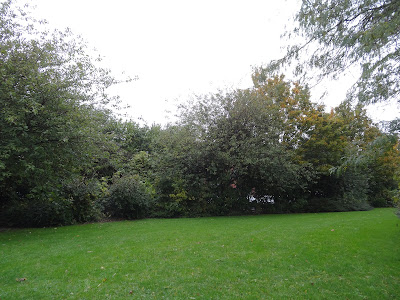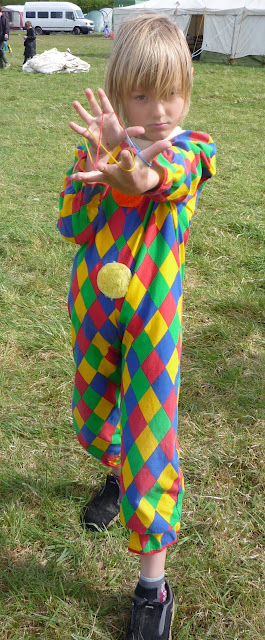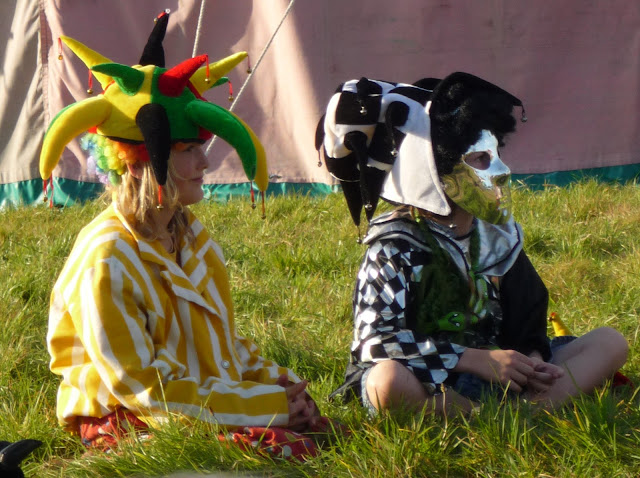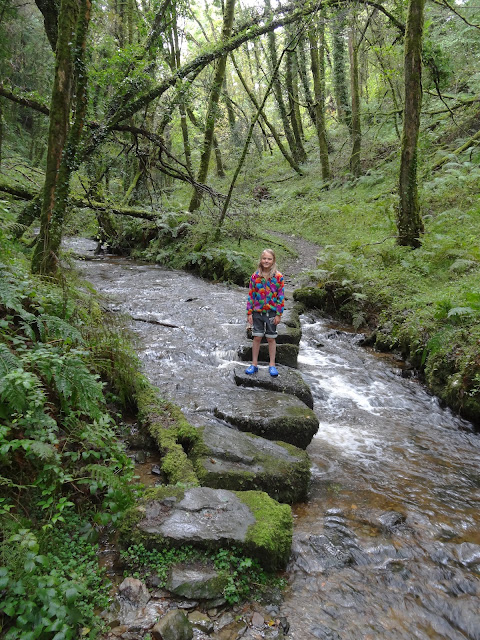Here's a photo I took in October a couple of weeks before the line of trees were cut:
And this is a couple of weeks after they were cut, taken today:
Bit of a change of view! Park management in other cities seems to be following a similar pattern too, with more dense areas of foliage being cut back in preference of fewer, individual, spaced trees. One of the main reasons given seems to be that Council workers want increased visibility into all areas of the parks by driving around them, so that they can check more easily for drug taking, homeless sleeping, naughty kids etc. I think far greater problems arise from the increasingly drastic loss of natural environment, particularly in built up areas, where these green spaces are little sanctuaries for both human and wildlife communities and add considerably to mental wellbeing as well as providing a physical breath of fresh air.
After this, I was pleased to be invited to attend a tree planting event at Warsash Common in Gosport, where over 100 trees were being planted as a hedgerow, as well as a 'Royal Oak' being planted by the Mayor and 2 oaks being planted in memory of my brother by a couple of Ward Councillors. We had given everyone an oak sapling at my brother's funeral and these two had been cared for by a friend of his until this special planting at each side of the gate entering the Nature Reserve.
 |
| One of Paul's oaks being planted at Warsash Common |
We were in Bristol recently, visiting Victoria Park and found many notices attached to trees calling for them to be saved as they were under park management plans to be cut down. When we looked at the plans which were displayed in the park, such ridiculous reasons were being given as - the plum trees have purple foliage which makes the park appear more gloomy in Winter! And the area of woodland at the top ruins the view of people who want to look over the City below! You only have to walk a little further along the hill past the trees and you can see that view if you want it...
At a time when we face such problems as deforestation, climate change and the loss of biodiversity and habitat, it's so urgent that we plant more trees and keep the ones we have, or at least replace the ones we lose with fresh locally grown native trees. The Independent Panel on Forestry calls for an increase of England's woodland cover of 50% by 2060. If that is going to be met, really serious value and priority needs to be given to trees.
Now we face a devastating threat to our woodlands - that of ash dieback caused by the Chalara fungus. An estimated 80 million ash trees could potentially be lost. Ash trees represent a third of our native woodlands, the other two main species being oak and beech. It's believed that the disease arrived from Europe and that increased global trade and tree imports are a big risk to the UK's native trees. Now, there has eventually been a ban on ash imports and 100,000 ash trees have already been destroyed in an attempt to stop the spread, but this has been a recognised danger for a long time and if trees were truly a priority, preventative steps could have been taken a lot sooner. The crucial time to identify diseased trees is before the leaves fall so although the leaves are mostly fallen now, people are still being urged to help out with photographing any ash trees they see which could be showing signs of the disease. The people at 38 degrees have designed a free app for i-phone or Android called Ash Tag or you can send your pics to:
 |
| An ash and an oak in a Horndean hedgerow, two favourite trees of our family. |
The buy/grow local principle is just as vital with our trees as it is with our food. Clive Anderson, president of the Woodland Trust comments in an interview with The Guardian:
"evidently it made business sense to take native ash seeds or seedlings overseas to be raised in commercial nurseries and to be brought back into the country as saplings"
http://www.guardian.co.uk/commentisfree/2012/nov/25/ash-dieback-clive-anderson-woodland-trust
This doesn't make any sense at all and stronger support for local nurseries needs to ensure that it makes clear business sense to keep every stage of plant growth within the country of origin.
National Tree Week was first launched in 1975 in an attempt to maintain the tree planting efforts made to replace the losses resulting from Dutch Elm disease, which had already taken 20 million of these significant trees from our landscape.
Robert Macfarlane writes with a glimmer of optimism, in his excellent book 'The Wild Places':
So the elms died, and the bark of the land was changed by their dying. Familiar horizons were transformed. People found it difficult to orient and steer themselves in landscape they had known for decades. Yet the elm is not extinct. Small trees live on in hedgerows, suckering out versions of themselves, spreading laterally, keeping their heads down: any tree that grows above twelve feet tends to become infected. Although the elm's associations with death are formiddable, so too is its capacity for survival.When feeling depressed or defeated about the destruction of trees, it's worth holding onto that thought amid the various battles, that nature has an amazing capacity for survival, for regenerating and for rising again. Trees and woodlands mean so much more than a 'view' or even 'lungs' or a 'habitat', they're part of our consciousness, our mythology and our identities in ways which resurface for many people when faced with their loss.
I joined the protest back in 1993 at George Green, Wanstead Common, to try and stop the huge 250 yr old chestnut being cut down to make way for the expansion of the M11. That day really demonstrated to me what a tree can mean socially and emotionally to people. I remember the 83 yr old man who told me in tears about how much he LOVED this tree, about the happy childhood days he'd spent playing in its branches, about how he'd lived here all his life and it felt like part of him, of his life, his family. There were many people there that day who, held back by police brutality, watched as 250 yrs of life crashed bit by bit to the ground and it felt like a great collective heart was breaking there, amid the tears and cries.
 |
| Chestnut tree, Wanstead Common 1993 |
We'll be following our usual tradition of going to one of our favourite events of the year, with its enormous spiral dance, mummers plays, morris dancing, and general magic in honour of trees - Tree Dressing day at the Weald & Downland Open Air Museum at Singleton. Maybe see you there!
 |
| Tree Dressing at Singleton 2011
I guess the bottom line is: Trees are >>>IMPORTANT<<<
|














.JPG)


















































